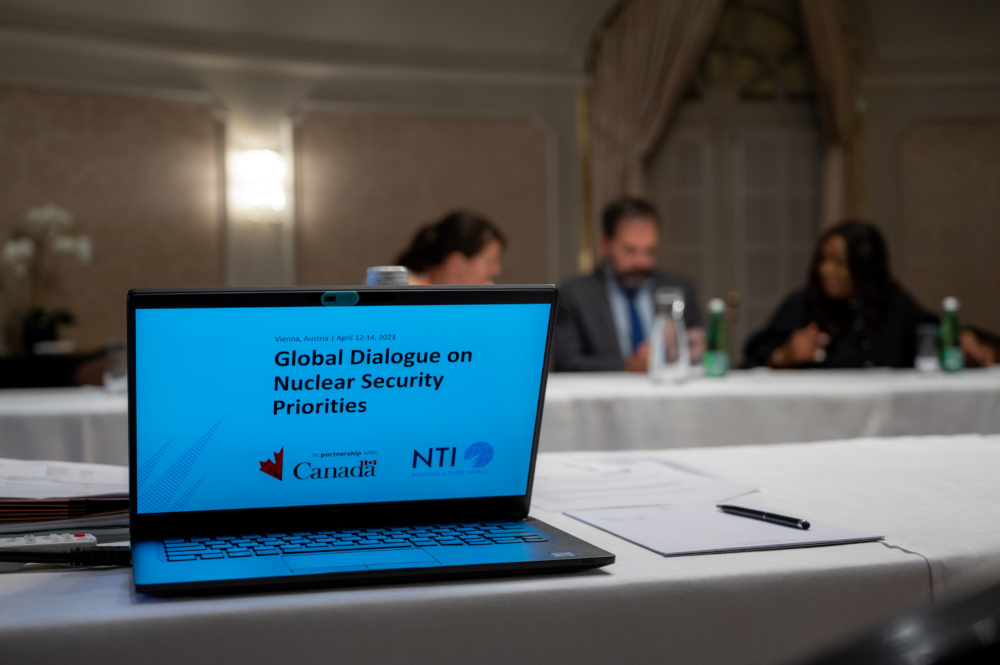
Fostering Nuclear Security Leadership and Innovation
Lessons Learned from 10 Years of the Global Dialogue on Nuclear Security Priorities
This is the fourth in a series of four Non-Papers from the Global Dialogue on Nuclear Security Priorities. Through the Global Dialogue, government officials, international experts and nuclear security practitioners are engaging in a collaborative process to build consensus about the need for a strengthened global nuclear security system, how it would look and what actions would be needed at the 2014 Nuclear Security Summit and beyond.
Both international standards and best practices are necessary for a strengthened global nuclear security system. While international standards serve a vital purpose in establishing the nuclear security “floor,” best practices can serve to elevate the level of practice and can help governments and nuclear security practitioners reach the far more optimal nuclear security “ceiling.” The essential value of best practices is clear considering how they are used to develop international standards and guidelines. More work, however, needs to be done to encourage governments and nuclear security practitioners to accelerate the implementation of best practices globally.
This paper provides describes the relationship between “best practices” and “standards,” the role they should play in a strengthened nuclear security system, and practical steps for accelerating the implementation of the nuclear security mission.
Defining Standards and Best Practices
According to generally accepted “generic” definitions, a standard is established by authority, custom, or general consent and defines performance requirements, specifications, guidelines, or characteristics. A best practice is a method or technique that has consistently shown results superior to those achieved with other means and that, through experience and research, has proven to reliably lead to a desired result.
Standards define objectives, whereas best practices describe the process by which an actor can meet or exceed these objectives, other legal/regulatory requirements or performance goals. While standards represent a consensus judgment on security goals—and therefore sometimes reflect a minimum level of agreement—best practices are a means of implementing security to reach an optimal level of performance for a given set of conditions. The existence of a standard is not a prerequisite for the development and implementation of best practices. Standards and best practices are linked in that each can be used to inform the development of the other.
Standards are relatively static, usually evolve slowly over time, and often lag behind emerging threats or new technology. Yet they have the benefit of being politically or institutionally authoritative and can successfully define the consensus of a diverse community around a shared objective. But consensus may be difficult or impossible to build in a timely fashion.{{footnote:Nuclear security standards are found in the International Atomic Energy Agency’s (IAEA) INFCIRC/225/Rev. 5, in the annex to the Convention on the Physical Protection of Nuclear Material (CPPNM), and in the security fundamentals contained in the CPPNM’s 2005 amendment. Given its near universality, INFCIRC/225/Rev. 5 is the primary nuclear security standards document. However, it is relatively static and does not provide a flexible, dynamic description of how to implement the guidelines it contains. The IAEA also offers implementation guides to support the recommendations contained in INFCIRC/225/Rev. 5, but they are not necessarily reflective of specific experience and do not comprise best practices.}}
Unlike standards, which are agreed upon and adopted by an organization or body, best practices develop not by consensus but from the experience of many individuals and groups and are constantly evolving. They are dynamic and can be tailored to a specific set of circumstances and conditions. Although the characteristics of best practices and standards may be different, they are related concepts and play parallel, complementary roles in ensuring security. They share the same goal—in the case of nuclear security, to ensure that nuclear materials are secure from unauthorized access and theft and that nuclear facilities are secure from sabotage. International standards and best practices are complementary and essential concepts for the implementation of nuclear security.
Sign up for our newsletter to get the latest on nuclear and biological threats.
Lessons Learned from 10 Years of the Global Dialogue on Nuclear Security Priorities
The Nuclear Threat Initiative has convened government officials, experts, representatives from international organizations, and industry leaders since 2012 to define what a truly comprehensive and effective global nuclear security system would look like and has developed related recommendations. This paper is the culmination of this work and lays out a vision for strengthening the global nuclear security system and the steps needed to achieve it, including after the summit process ends.
This primer provides an overview of the key agreements, guidelines, multilateral engagement mechanisms, and implementation services that make up today’s nuclear security system.